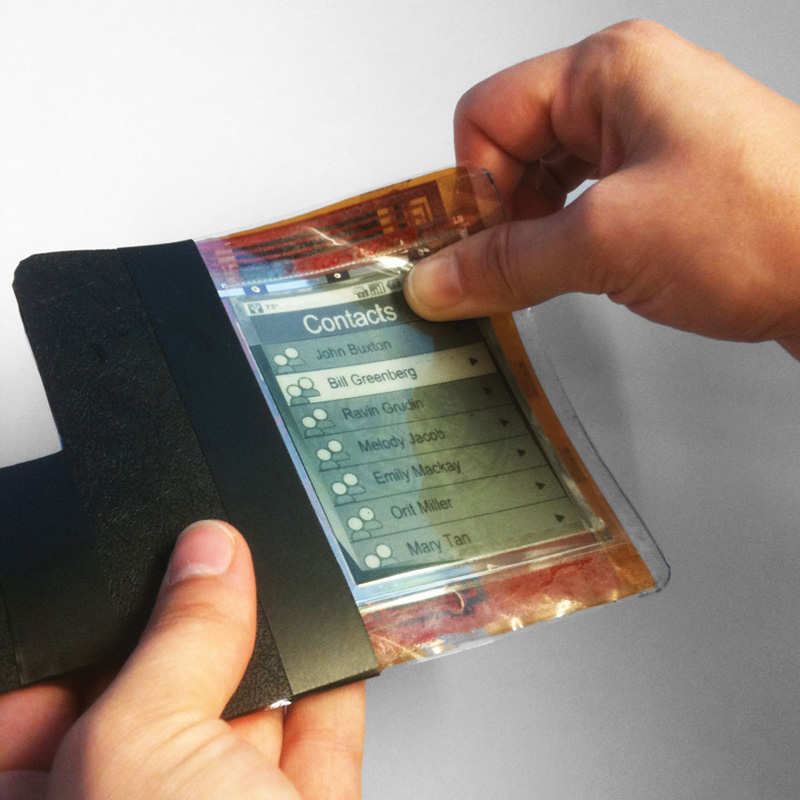
A revolutionary smartphone that looks and bends like a piece of paper has brought international acclaim to a Queen’s professor.
Roel Vertegaal, associate professor at the school of computing, spearheaded the 9.5 cm invention.
The product is made of a tall flexible slip of plastic which uses E- ink to display text just like a Kindle reader. Currently the PaperPhone can make calls, take notes, and plays music only when connected to a laptop. Users must bend different corners of the device to perform these actions.
“You can curve [flexible smartphones] around, you can use them as if they were paper, and thus you can copy some of the interaction techniques,” Vertegaal said, adding that this will hopefully help those who are uncomfortable interacting with technology. Vertegaal is also the director of Queen’s Media Lab. A prototype of the flexible smartphone was revealed by Vertegaal and his team at a May 10 conference in British Columbia. It took $7,000 to create and was the result of collaboration between Queen’s and Arizona State University.
“We’ve been working [on this for] seven years,” Vertegaal said. “We’re having a lot of fun and [we’re] working with the top industrial designers.” Vertegaal said apps are a thing of the past and smartphones like iPhone won’t be able to match his product.
“These new smartphones will be thinner [and have a] lighter weight. They don’t break when you drop them,” he said.
Although Vertegaal’s creation is a revolution in smart technology, there is no current market for his device which will take five to 10 years to fully develop.
“Within 10 years there will be a market for it,” he said, adding that he expects his paper-like screen to replace the common LCD screen.
“It will happen within 10 years and possibly as early as five years. It’s hard to tell.”
Vertegaal said he’s already received offers from companies who want to buy the rights to the smartphone. “Eventually it’s going to be for sale,” he said. “Whether it’ll be us putting it [up] for sale or someone else is unclear.”
The work being done by the Human Media Lab has brought international attention to Queen’s School of Computing.
Vertegaal said that while people can be apprehensive about the increasing use of technology, his lab within the School of Computing aims to make technology easy and interactive.
“It’s been great running a design laboratory out of Queen’s,” he said. “What I would like for this to mean … is to get a tech hub surrounding Queen’s,” he said.
Tags
paper, Queen's, smartphone, Technology
All final editorial decisions are made by the Editor(s)-in-Chief and/or the Managing Editor. Authors should not be contacted, targeted, or harassed under any circumstances. If you have any grievances with this article, please direct your comments to journal_editors@ams.queensu.ca.
